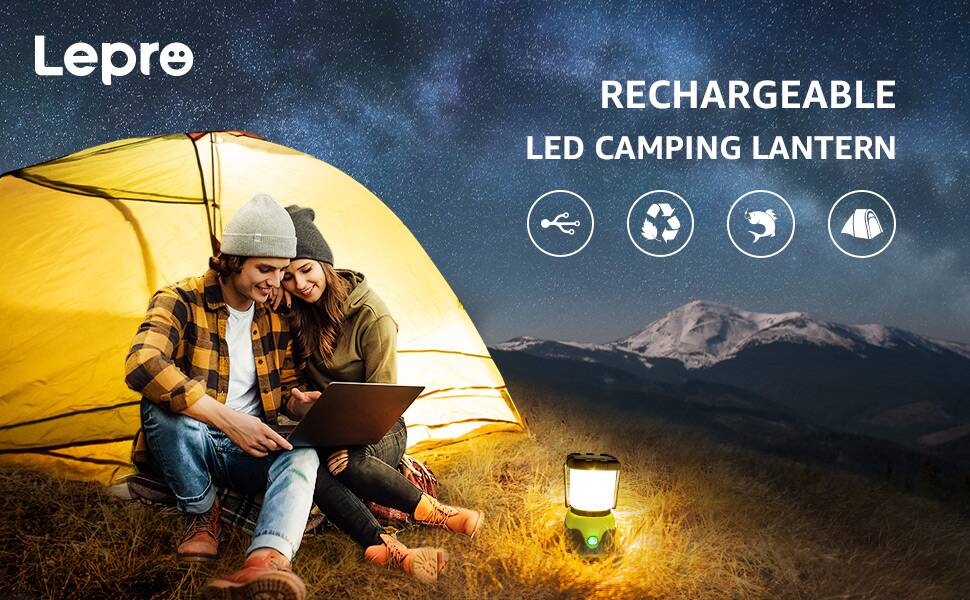Warm summer nights are unlike any others – good friends, bonfires, barbecues and laughter – all make up this wonderful time of the year. However, it’s also a mysterious time, especially at night. Walking around without any light is a hazard – tripping over things like rocks, chairs, other people, etc. This is why camping lanterns came about – to give campers and other nighttime lovers some enjoyment when the sun goes down.
The only problem in finding a lantern is that you have to wade through the different manufacturers to find the right one for your particular situation and atmosphere. You also want to find a lantern that will work as an emergency tool and can be placed in a survival kit.
8 Aspects to Consider in a Camping Lantern
Light Output
The measurement of light output is in lumens, and the higher the lumens, the more brightness the lantern will emit. It’s important to note that not all lanterns are measured the same way. Some manufacturers will take the measurement at the bulb, with others measuring the exterior of the lanterns (or out the front).
However, the brighter the lantern is, the more energy it will use, which is many manufacturers designed their lanterns with multiple brightness modes. Some lanterns have lumens that begin at 40 and go all the way to 700 (brightest light). However, many lanterns have an average of 150 to 350 lumens.
Two key factors affect brightness – design and optics. Some lanterns offer enough light for a table but nothing else. Think about how much light you need for your area.
- 100 or less lumen is ideal for a tent.
- 200 lumens is ideal for a campsite
- 300 or more lumens is ideal for a large campsite party
Weight and Size
A lantern’s output is not always dictated by its weight size. People who will be backpacking will do well with smaller lamps, but they produce a low output and weight ounces. This low light is good for eating along the trail or reading while lying down. Larger lanterns are usually heavier and can illuminate a huge area.
You also need to take into account your power source size and weight, which adds to the lantern’s weight. Without the power source, you don’t have a lantern.
Batteries
When looking at lanterns, look at the battery type – some use lithium and alkaline batteries, but not all will. You can also use lithium-ion rechargeable batteries to give your lantern its power. It’s important to know the difference between how these two types work:
- Alkaline batteries – will lose battery capacity when exposed to below-freezing temperatures. If you use alkaline batteries, be sure to pack them in a sleeping bag or an inner pocket to keep the cold from draining their power.
- Lithium batteries – will do better when the temperatures are colder.
Waterproof Camping Lanterns
Some manufacturers have designed their lanterns to be completely waterproof, but some lanterns are only water and/or splash resistant. Make sure to understand the difference between these standards. They are known as the International Protection Marking and designate a number to how much water the lantern can withstand before it no longer works.
For example, an IPX-0 rating means no protection from water is offered. An IPX-8 rating means there is some protection and can be submerged in no more than three meters of water. For most outdoor situations, an IPX-4 rating will work (and is protection from splashing).
Hanging Camping Lanterns
When buying a lantern, do you want to hang it up somewhere high to illuminate more coverage? If so, you need to find a lantern with a clip, hook or loop that you can hang from a pole or tree.
Ease of Use
Find a lantern that makes it easy to turn on and off. You never want to fumble in the dark after a day of driving to turn on the light. Avoid over-complicated lanterns with codes and tiny knobs.
Portable Camping Lanterns
If you plan on engaging in several night activities, you want camping lights you can transport and move around with.
Adjustability
Be sure to find a lantern that offers a stable base and legs you can adjust to remain steady on uneven ground. Creativity will be a necessity if you find yourself on the rutted ground.
Other Notable Features of Camping Lanterns to Look For
- Flashlight mode
- Collapsible Lanterns
- Device charger
When you look for a lantern for your next excursion, you will be overwhelmed by the sheer number of them on the market. While every factor is essential, the lumen output and power source are the two most important to consider. From there, you can decide on the weight, size, and various side features offered by the manufacturer.
After learning how to choose camping lanterns, I highly recommend LED camping lanterns from Lepro. Lepro provides high-quality camping lights with detachable flashlights, USB cables, or batteries to meet your different needs in camping.




